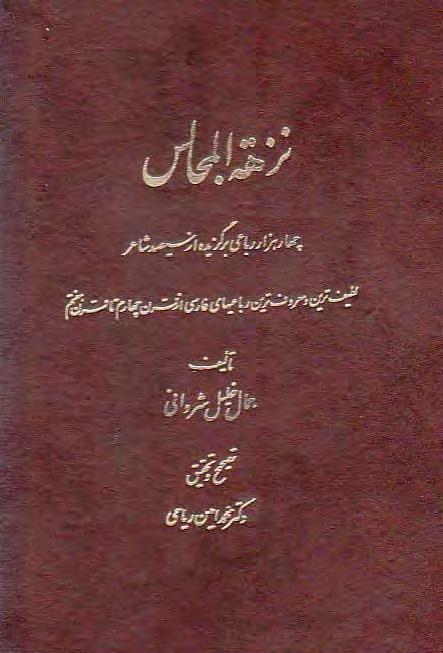The Nozhat ol Majales or the “Joy of the Gatherings” is a major document that adds further weight to the history of the Persian legacy in Azarbaijan and the Caucasus. For a Persian language introduction to the Nozhat ol Majales see معرفی نزهه المجالس by Shahrbaraz.
This is essentially a compilation of 4,100 quatrains organized in 17 chapters. The book can be downloaded in its textbook form here: Nozhat ol Majales (in pdf). The book was preserved for posterity during the 14th century (circa July 1331) through the efforts of Ismail b. Esfandiyar b. Mohammad b. Esfandiar Abhari.
A rare document of Persian quatrains
The Nozhat ol-Majales is highly significant as it bears very rare quatrains from Iranian savants such as Ibn Sina (Avicenna) and famous Persian poets such as Fakhreddin Asad Gorgani and Nezami Ganjavi. There are even references to Fariborz III Shirvanshah of the Caucasus and the Seljuq rulers.
The Persian Legacy of Azarbaijan and the Caucasus
Of major importance is that the Nozhat ol Majales contains the Persian languiage works of at least 115 poets from Iran’s Azarbaijan province in the northwest of Iran and the eastern portion of the Caucasus. The latter region was historically composed of former Iranian territories such as Shirvan, Arran,Ganja, etc.
Ganja for example is represented by 24 Persian poets in the Nozhat ol Majales. Other Persian poets from the Caucasus include Bakhtiar Shirvani and Kamal Maraghi. it is also highly notable that many of the Caucasian poets were women, including Dokhtar-e-Salar and Razziye Ganjai. Unlike many other parts of Greater iran, most of the Caucasian poets originated from the regular working class and not from elite courts.
This adds further evidence to the fact that Persian was a common language of the ordinary people in the Caucasus and Azarbaijan before the gradual linguistic Turkification of the region. Persian was not simply a language confined to select elites in the Caucasus and Azarbaijan – this was the popular language of the mainstream populace.
Full-fledged linguistic Turkification in the eastern Caucasus and Azarbaijan began from the 16th century AD with the arrival of the Safavids. The latter were supported and joined by large numbers of Shiite Turcomen Qizilbash supporters from Anatolia who migrated into the province of Azarbaijan in Iran. What is significant is that Persian was still in force in the 13th century AD, in both Azarbaijan and the Caucasus, two centuries after the arrival of the Seljuk Turks.




